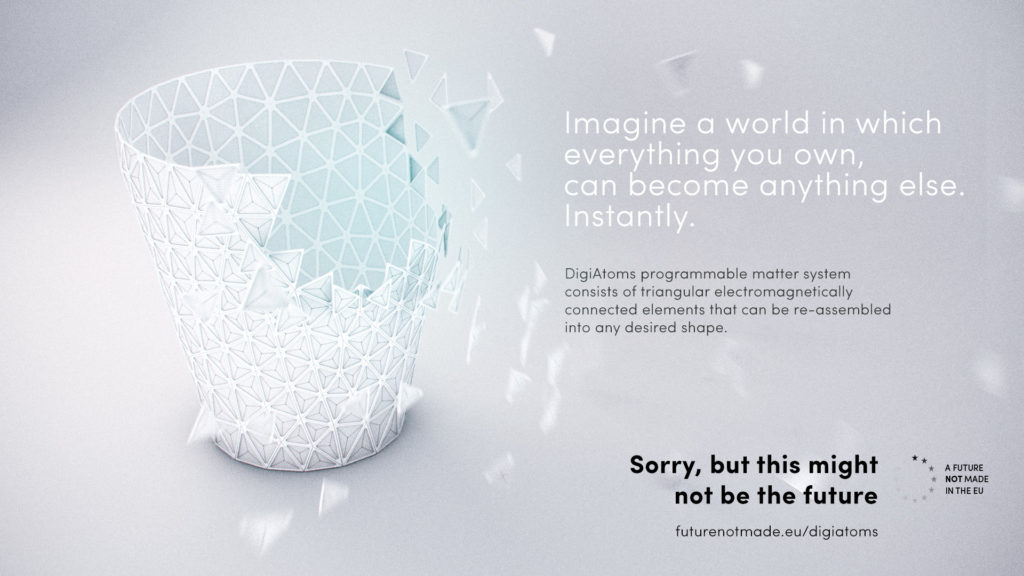Science fiction usually mirrors contemporary challenges and anxieties better than the future it tries to predict. Nevertheless, that does not stop creators from imagining that future. Rightfully so, even if as nowadays the technology advances so fast that some concepts age before they have a chance to be applied.
Centrum Cyfrowe, a Polish COMMUNIA member, does not usually deal with science fiction, but the ongoing yearlong debate on the copyright reform has unexpectedly directed them towards speculative design in modeling the future. A Future not Made in the EU campaign presents future objects and services that may enhance cultural and educational experience, but their future is uncertain – their utility does depend on whether the copyright reform addresses future challenges properly.

Meanwhile, the law is usually drafted based on the past experiences rather than on recognising future challenges. The longer we are in this debate, the better we can see that looking backwards to regulate participation in increasingly digital culture may result in fatal consequences.
If the authors and contributors to the copyright reform look behind their shoulder while drafting it, we will end up stuck in the analogue era. Specifically, Europe will end up like this. The rest of the world will advance forward.
At the same time, Centrum Cyfrowe is not satisfied with the seemingly unavoidable dystopian context of the debate on technological progress. Tech is neither good nor bad in itself; it is as beneficial as its final application. It can therefore contribute to making the world a better place. We all would like to believe that through technological progress we can touch the future, we can understand it better, and finally we can shape it with the decisions we take today.
How does that relate to the copyright? Copyright underpins almost anything we do online by regulating what sort of content we can access and what not, as well as how and under which circumstances we can make use of it. We experience each day how the possibilities to create, share, and learn expand with new tech. At the same time these opportunities seem to be increasingly limited with the copyright drafted in times when culture, knowledge, or entertainment did not exist without their physical content carriers.

Now that the European Union is occupied with the copyright reform, the time has come to remind decision makers that we want copyright that looks into the future. One that will allow us to create, teach, learn, and participate in culture and entertainment without legal barriers in the digital world.
The future of copyright can be bright. We should all contribute to this outcome. Find out how:
- A Future not Made in the EU campaign
- DigiAtoms – Bits and atoms are one
- DigiDermis – Touch the digital for real
- DigiTutor – A lifelong learning experience
Visuals by Jakub Koźniewski and Marcin Talarek in “A Future Not Made in EU” campaign by Centrum Cyfrowe

